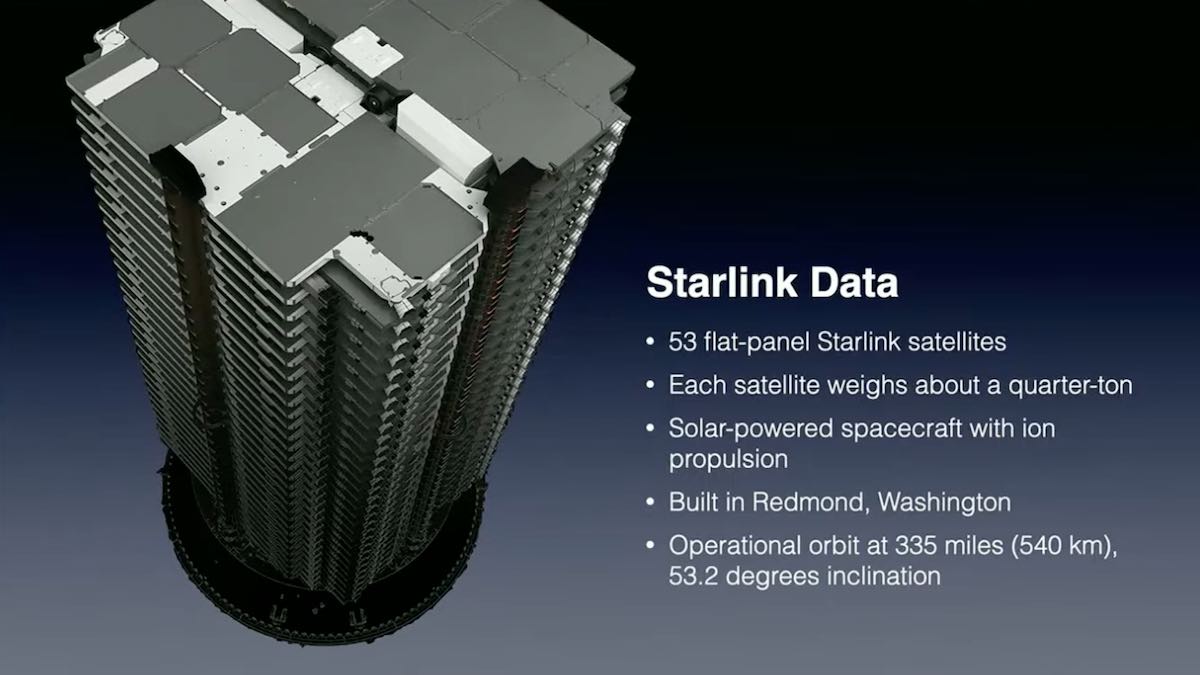Falcon 9 rocket lifts off from Florida on another Starlink mission – Spaceflight
Live coverage of the countdown and launch of a SpaceX Falcon 9 rocket from Launch Complex 39A at NASA’s Kennedy Space Center in Florida. The Starlink 4-25 mission will launch SpaceX’s next batch of 53 Starlink broadband satellites. Follow us on Twitter.
SFN Live
” alt=””/
SpaceX sent another cluster of 53 Starlink internet satellites into orbit Sunday aboard a Falcon 9 rocket, the company’s 33rd mission of the year and sixth launch of July. Liftoff from pad 39A at NASA’s Kennedy Space Center in Florida occurred at 9:38 a.m. EDT (1338 GMT).
The Falcon 9 booster landed on SpaceX’s drone ship parked downrange in the Atlantic Ocean northeast of Cape Canaveral.
The rocket headed northeast from the Kennedy Space Center, aiming to deliver the flat-packed broadband relay stations to an orbit ranging between 144 miles and 210 miles in altitude (232-by-338 kilometers). Deployment of the 53 flat-packed satellites from the Falcon 9’s upper stage occurred about 15 minutes after liftoff.
With Sunday’s mission, designated Starlink 4-25, SpaceX has launched 2,957 Starlink internet satellites, including prototypes and test units no longer in service. The launch Sunday marked the 53rd SpaceX mission primarily dedicated to hauling Starlink internet satellites into orbit.
Stationed inside a firing room at a launch control center at Kennedy, SpaceX’s launch team began loading super-chilled, densified kerosene and liquid oxygen propellants into the 229-foot-tall (70-meter) Falcon 9 vehicle at T-minus 35 minutes.
Helium pressurant also flowed into the rocket in the last half-hour of the countdown. In the final seven minutes before liftoff, the Falcon 9’s Merlin main engines were thermally conditioned for flight through a procedure known as “chilldown.” The Falcon 9’s guidance and range safety systems were also configured for launch.
After liftoff, the Falcon 9 rocket vetored its 1.7 million pounds of thrust — produced by nine Merlin engines — to steer northeast over the Atlantic Ocean.
The rocket exceeded the speed of sound in about one minute, then shut down its nine main engines two-and-a-half minutes after liftoff. The booster stage released from the Falcon 9’s upper stage, then fired pulses from cold gas control thrusters and extended titanium grid fins to help steer the vehicle back into the atmosphere.
Two braking burns slowed the rocket for landing on the drone ship “A Shortfall of Gravitas” around 400 miles (650 kilometers) downrange approximately eight-and-a-half minutes after liftoff.

The booster flying on the Starlink 4-25 mission, known as B1062, launched on its eighth trip to space. It debuted with the launch of a U.S. military GPS navigation satellite in November 2020, and launched the all-private Inspiration4 and Axiom-1 crew missions in September 2021 and in April of this year.
Most recently, the booster flew June 8 with the Egyptian Nilesat 301 geostationary communications satellite.
Landing of the first stage on Sunday’s mission occurred moments after the Falcon 9’s second stage engine cut off to deliver the…
Read More: Falcon 9 rocket lifts off from Florida on another Starlink mission – Spaceflight
